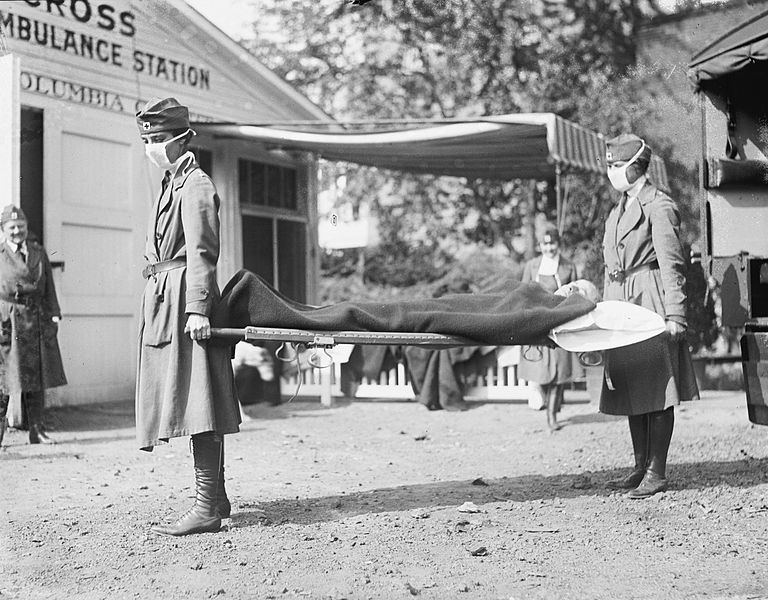Why is flu so dangerous, and so difficult to vaccinate against?
One reason is because the group of viruses that cause flu can mutate very quickly, meaning that antibodies our bodies created to defend against last year’s flu may not work for this year’s version. This also means that biomedical researchers working to create new vaccines have to make a new version of the vaccine every year – and are often ‘working in the dark’ trying to guess what type of flu they will have to vaccinate against several months in advance.
Claire Hill is a PhD student in Interdisciplinary Bioscience at Oxford. In this podcast, she explains how our immune systems work to protect us against flu viruses, how research scientists work to keep up with mutations in the viruses, and how scientists are working to create a new generation of flu vaccines:
Can you fight flu with maths?

Image via Wikimedia Commons
In 1918, a massive influenza pandemic may have infected up to one-third of all human beings alive on the planet. It caused the deaths of between 3% and 6% of the entire world’s population – that's more people than died in all of World War I!
Because the flu broke out during wartime, strict controls on the media meant that the British government ordered British newspapers not to write too much about deaths in the UK, France and other allied countries. The same thing was happening in Germany, so newspapers there weren't allowed to write about German flu cases. However, because Spain was neutral in the war both Allied and German newspapers could freely report on how many people were suffering there. This meant that most newspaper reports focused on flu cases in Spain – which led people to call the pandemic “Spanish flu” even though it didn’t begin there.
In order to avoid similar pandemics in the future, we need biomedical scientists, immunologists, chemists, geneticists and more – but we also need maths!
Recently, Dr Robin Thompson (Oxford University Mathematical Institute) and Dr Ellen Brooks-Pollock (University of Bristol) co-edited a special edition of an academic journal all about how using mathematical models can improve our understanding of disease outbreaks in humans, animals and plants. Click here to read a summary of their research and a demonstration of how you can predict whether a major epidemic will occur using only a quadratic equation!
Meet the physicists working to unpick the structure of flu RNA
How can physics help us combat the flu? As we mentioned above, the flu virus can replicate and mutate very quickly, and the way in which it creates new versions of itself is still not very well understood. At the Oxford ‘Gene Machines’ research group, physicists are working to understand how the virus regulates itself during replication. They use spectroscopy (exposing matter to electromagnetic radiation) to look at single molecules of the virus (very small units of two or more atoms). This allows them to learn more about how the virus acts when it divides to create copies or new versions of itself.
In addition to helping researchers understand the way in which the viral RNA is bound and copied, the group’s research has also suggested that the flu virus may have a common ancestor with other viruses, meaning that their work could help scientists understand more diseases! You can read a more detailed summary of their research on their page here.